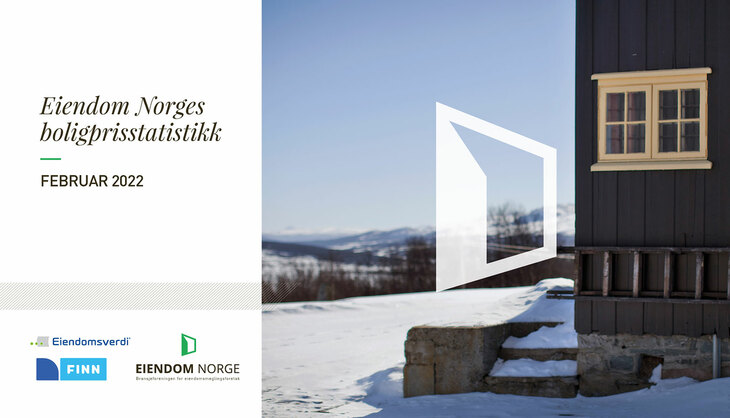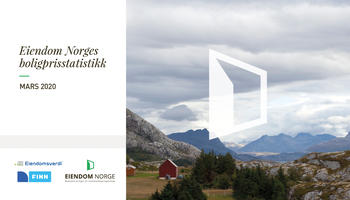
Strong growth in housing prices in February
Housing prices rose by 1.5 per cent in February 2022. Adjusted for seasonal variations, prices rose by 0.7 per cent.
House prices have risen by 6.3 per cent in the last year.
The average price for a home in Norway was NOK 4,244,759 at the end of February.
- House prices continued to rise sharply in February. Much of the price increase can be explained by the weak supply side, says CEO Henning Lauridsen of Eiendom Norge.
- There is a markedly lower supply of second-hand homes so far this year. In addition to the fact that very many homes were sold in November and December last year, the new Disposal Act from New Year has created a bottleneck. After the change in the law, it takes significantly longer to prepare for a home sale, he says.
- I would encourage those who are planning home sales this spring not to wait until after Easter to get the home on the market. The demand for homes is great now and there is no reason to wait to put the home up for sale, says Lauridsen.
Significantly lower sales and supply
In February, 6,284 homes were sold in Norway, which is 15 per cent less than in the corresponding month in 2021.
So far this year, 11,700 homes have been sold in Norway. That is 18.2 per cent less than the same period last year.
In February, 6,657 homes were put up for sale in Norway, which is 10 per cent less than in the same month in 2021.
So far this year, 12,360 homes have been put up for sale. That is 11.5 per cent less than in the same period last year.
- So far this year, significantly fewer homes have been sold than last year. The fall in the number of new homes on the market is not as strong, but here too the decline is marked, says Lauridsen.
It took an average of 38 days to sell a home in February, down from 41 days in January. Tønsberg w / Færder had the shortest sales time with 20 days and Tromsø had the longest sales time with 65 days.
- The short sales time together with fewer numbers of new homes on the market means that the number of unsold homes is currently among the lowest in several years, says Lauridsen.
Encourages moderation in bidding rounds
Drammen had the strongest seasonally adjusted price development in February, with an increase of 1.7 per cent. Follo had the weakest seasonally adjusted price development with a seasonally adjusted decline of 0.8 per cent.
Bodø / m Fauske has the strongest 12-month growth with an increase of 12.8 per cent, followed by Tønsberg m / Færder with 12.6 per cent and Drammen with 11.3 per cent.
Oslo had the weakest development in the 12-month growth with an increase of 3.3 per cent, followed by Ålesund m / omegn of 5.4 per cent.
- Despite the strong rise in house prices nationally, there are certain areas that have a moderate development, says Lauridsen.
- In areas with strong price growth, I would encourage home buyers to think twice in hot bidding rounds. Historically, it has been shown that it takes many years to recover periods of very strong house price growth, and it has also been documented that it is difficult to recover price growth created by hot bidding rounds, he says.
- When Norges Bank has announced several interest rate increases in 2022, it is likely that the housing market will develop more moderately over time, Lauridsen concludes.






